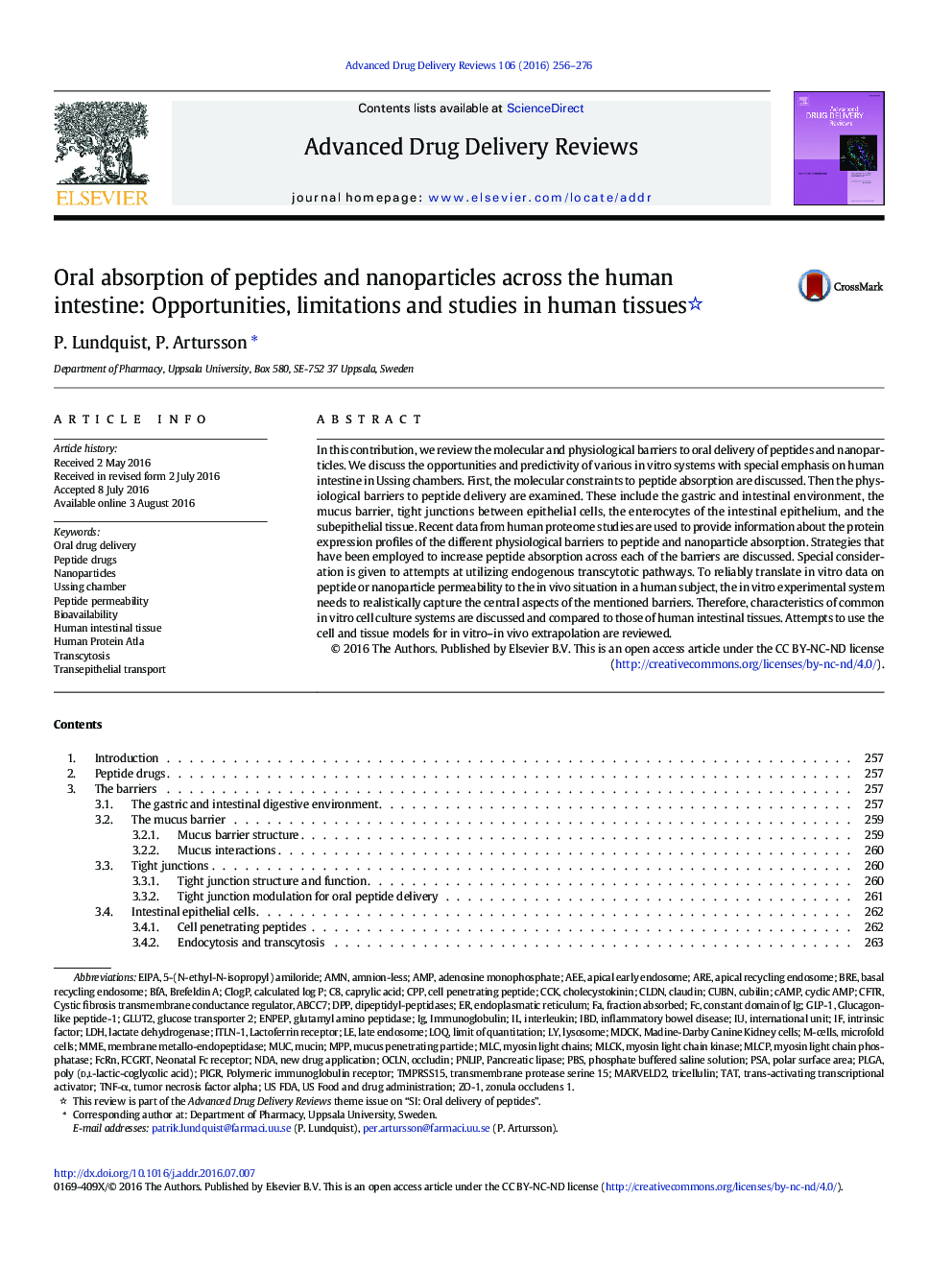| Article ID | Journal | Published Year | Pages | File Type |
|---|---|---|---|---|
| 5520147 | Advanced Drug Delivery Reviews | 2016 | 21 Pages |
In this contribution, we review the molecular and physiological barriers to oral delivery of peptides and nanoparticles. We discuss the opportunities and predictivity of various in vitro systems with special emphasis on human intestine in Ussing chambers. First, the molecular constraints to peptide absorption are discussed. Then the physiological barriers to peptide delivery are examined. These include the gastric and intestinal environment, the mucus barrier, tight junctions between epithelial cells, the enterocytes of the intestinal epithelium, and the subepithelial tissue. Recent data from human proteome studies are used to provide information about the protein expression profiles of the different physiological barriers to peptide and nanoparticle absorption. Strategies that have been employed to increase peptide absorption across each of the barriers are discussed. Special consideration is given to attempts at utilizing endogenous transcytotic pathways. To reliably translate in vitro data on peptide or nanoparticle permeability to the in vivo situation in a human subject, the in vitro experimental system needs to realistically capture the central aspects of the mentioned barriers. Therefore, characteristics of common in vitro cell culture systems are discussed and compared to those of human intestinal tissues. Attempts to use the cell and tissue models for in vitro-in vivo extrapolation are reviewed.
Graphical abstractDownload high-res image (263KB)Download full-size image
